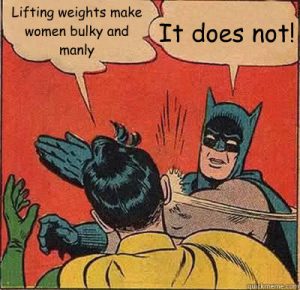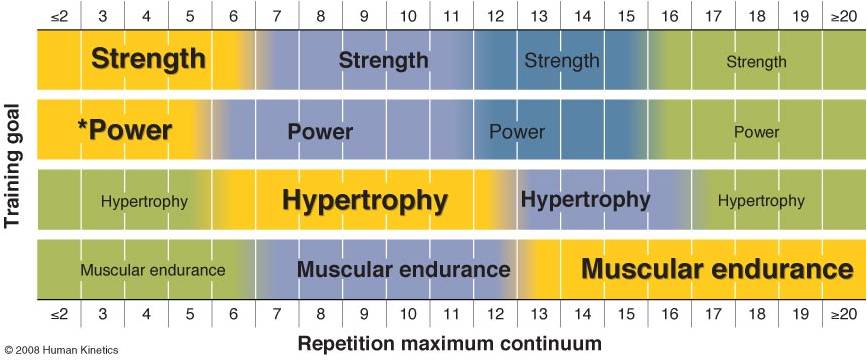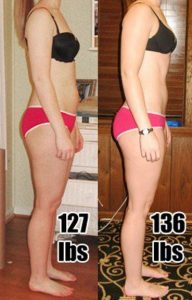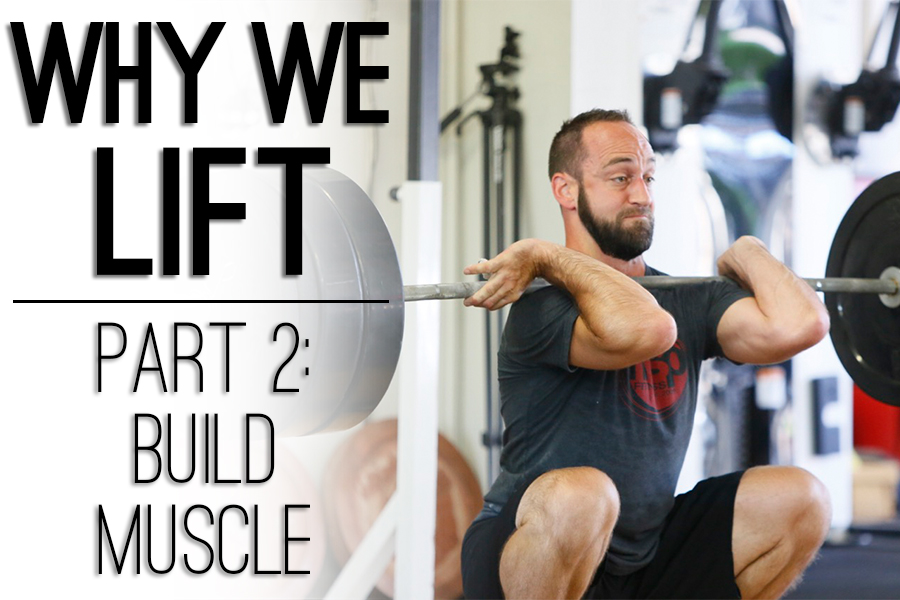Why do we lift? BECAUSE I SAID SO! Blog over, conversation done. We’ll see you on the internet some other time…
Okay seriously…
If you’ve been following along, you know that I am currently writing a series of posts on the reasons for why resistance training is a staple in our both our group and individual programs at MSP Fitness. Far too often the conversation around the water cooler, i.e. internet forums, is less concerned with WHY people ought to lift and more focused on, “shut up and do it already!”, or something to that effect. I stated in the first post that you should lift to get stronger, what follows is reason number two: build muscle.
Reason 2: Build muscle
For those of you who are currently resistance training, AND for readers who might be considering starting, the single most talked about outcome of resistance training is the increase in muscle fiber size; aka hypertrophy; aka muscle size; aka gainz (yes with a Z, always with a Z).
Many people find their way into resistance training, or lifting, because they see it as an avenue to become the behemoth their genetics denied them of being. This anecdotal desire of many males, although I shouldn’t generalize, has unfortunately clouded the perception of others, turning some off to any and all forms of resistance training for fear of becoming “bulky”.
Allow me to set the record straight!
 Ladies and gentlemen who submit themselves to any form of resistance training will see an increase in the size (cross-sectional area or CSA) of all muscle fibers, but not an increase in number of actual fibers. This means that ANY resistance on the muscle causing it to work harder than it has had to previously (i.e. the principle of overload) will cause the muscle fiber to grow as a form of adaptation and progression. What is often miscommunicated, and where you can take heart, is that the degree to which the muscle fiber grows is directly correlated to the type of training applied AND genetics (your own unique make up determining how you’ll respond to anything). This means that if carrying in your groceries twice weekly isn’t making you huge, neither are other forms of resistance training unless your training goal is dedicated to it.
Ladies and gentlemen who submit themselves to any form of resistance training will see an increase in the size (cross-sectional area or CSA) of all muscle fibers, but not an increase in number of actual fibers. This means that ANY resistance on the muscle causing it to work harder than it has had to previously (i.e. the principle of overload) will cause the muscle fiber to grow as a form of adaptation and progression. What is often miscommunicated, and where you can take heart, is that the degree to which the muscle fiber grows is directly correlated to the type of training applied AND genetics (your own unique make up determining how you’ll respond to anything). This means that if carrying in your groceries twice weekly isn’t making you huge, neither are other forms of resistance training unless your training goal is dedicated to it.
When it comes to the type of resistance training or lifting, there are four recognized training goals:
- Strength: one’s ability to express max force (something we addressed in the first post of this series).
- Power: one’s ability to express max velocity.
- Hypertrophy: training aimed at increased the cross-sectional area of the muscle (the general thrust of this current post).
- And lastly, muscular endurance: one’s ability to repeatedly perform a muscle action over longer periods of time.
If you look at the chart below, you’ll see these four outcomes or goals of resistance training highlighted in yellow. Along the top and bottom of the chart, you’ll notice a series of integers that represent the repetitions performed during training. Important to note is that despite each of the training goals having a yellow, bolded block where a number of reps will cause the body to adapt towards said goal, work done at other rep ranges evokes the same response just to a much lesser degree. For instance, to increase muscle fiber size, someone could train at any repetitions; however to most optimally train for size (or get “real bulky”) one would have to repeatedly and persistently train in the six to twelve rep range for their resistance training.

So that’s HOW you increase muscle size, but WHY should you?
Deriving reasons for the benefits of larger muscles (even if just marginally larger) needed an explanation of what it takes to get bigger muscles. Thanks for bearing with me. I’m going to separate the need for an increase in cross-sectional area of your muscle fiber into three categories.
- Aesthetic
- Function
- Health
Aesthetic:
 To look better naked. We started today’s post recognizing individuals who initially started lifting or training with weights to improve their appearance. Put simply, we lift to shape and build muscle for an aesthetic goal. To deny this as a contributing factor in the reasoning would be downright dishonest. You won’t fill out the chest and arms of your shirt by adding tons of mileage on your road bike. Those lower half’s “assets” aren’t going to look phenomenal in skinny jeans after endless cardio. Furthermore, your shoulders and back will unfortunately look no different in that little black dress without lifting a pound.
To look better naked. We started today’s post recognizing individuals who initially started lifting or training with weights to improve their appearance. Put simply, we lift to shape and build muscle for an aesthetic goal. To deny this as a contributing factor in the reasoning would be downright dishonest. You won’t fill out the chest and arms of your shirt by adding tons of mileage on your road bike. Those lower half’s “assets” aren’t going to look phenomenal in skinny jeans after endless cardio. Furthermore, your shoulders and back will unfortunately look no different in that little black dress without lifting a pound.
While cardio might look like it burns more calories than lifting weights, resistance training elevates the body’s energy expenditures after the actual workout, equating to calories being burned long after the training is done. After lifting at a higher intensity, the human body has to replenish depleted fuel stores, repair cells, and complete a whole laundry list of recovery items that demand oxygen. This oxygen consumption (EPOC) needs some form of fuel to help complete those processes. Fat stores are broken down after training and are released into the bloodstream, energizing the recovery process. Yay lifting and yay science!
Last note on training for aesthetic means. I hope you find it to be great news that not only are you shaping the muscle, but removing the fat as well while you lift. I have to mention that these fat burning properties are only obtainable when the lifting gets tough, i.e. heavy. You must be under external loads that are challenging, arguably 70% or higher of your given repetition maximum for that exercise. To ensure this in our client’s training, I will usually ask that on a scale of 1-10 the level of effort required to finish a set better be a 7 or higher to know we’re drawing out that desired response.
Function:
With larger muscle fiber size, comes a host of adaptation benefits. Muscle helps you function, move, and live; more of it isn’t a bad thing. It has been shown that inactive adults experience a 3% to 8% loss of muscle mass per decade. For those who are aging (essentially everyone but Mickey Mouse and Elrond Lord of Rivendell), utilizing weight lifting to improve or maintain the muscle you have is paramount to living a long life.
Increased muscle mass also allows you to do the things you love with greater ease. More muscle helps you pick your kids up and continue to throw them in the air as they age. It’s what supports your body as it lifts and picks up things around the house or yard, and complete tasks like changing a tire or carrying luggage all with a satisfying sense of autonomy. Having more muscle can make life easier.
Health:
Rounding out our defense for lifting to obtain bigger muscles, I bring up health as a passion topic. Those closest to me will know that I advocate resistance training for everything. “It’s simultaneously the cure for the common cold, AND you should vote for it in the next election!” In all seriousness, individuals with more muscle mass have stronger bones because of the training required to increase muscle fiber size. People with more muscle have more insulin receptor sites, allowing them to better regulate glucose homeostasis. Because of this, the body will naturally be at less risk for diabetes, obesity, heart disease, and cancer.
While seldom given thought, the lasting confidence that can come from an improved physique is invaluable. Improved mental health can act as a catalyst for a career update, greater satisfaction in relationships, and overall fulfillment in general. We’ll go into greater depth on this subject during a future post, but the health benefits of improving one’s physique are unparalleled when resistance training is the modality.
In conclusion:
Resistance training literally builds a better human. Don’t think of training with weights as being exclusively for those who want to get bigger. Bigger looks different for everyone and is dramatically affected by how you train. Remember, lifting to increase muscle fiber size allows you to shape and sculpt, helps you function better and for longer, and wards off other health issues during the process.
-written by Taylor Gish
As I’ve mentioned several times, to obtain the results of a specific goal, the training must match that endeavor. Now if you don’t know where to start, or you feel like the lifting you are doing isn’t getting the outcome you’ve been working towards, finding a qualified coach is the best way to go. They’ll handle the detail work so the work you put in is molding the body you’ve always wanted. If you are in the St. Paul / Minneapolis / Twin Cities area of Minnesota, MSP Fitness has the coaches you need. Located in St. Louis Park, our individual and group clients have been seeing the benefits you’ve just been reading about since 2009. To learn more about our program offerings or to schedule a consultation, CONTACT US today!

